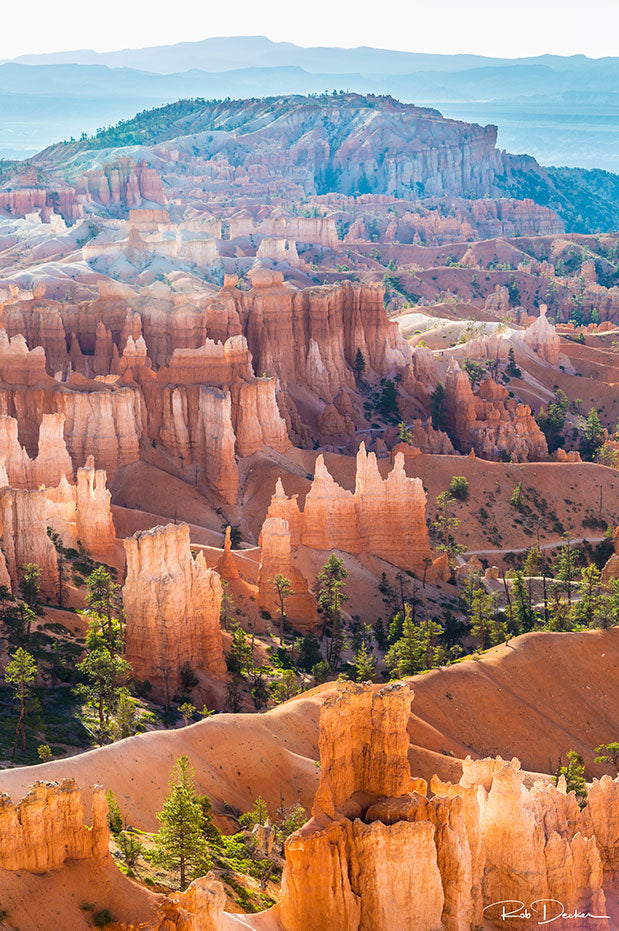
February 25th is Bryce Canyon's Birthday
Robert DeckerHoodoos! Odd-shaped pillars of rock left standing from the forces of erosion -- are found on every continent, but Bryce Canyon boasts the largest collection of hoodoos in the world! Despite its name, the major feature of Bryce Canyon is a collection of giant natural amphitheaters along the eastern side of the Paunsaugunt Plateau in southwest Utah featuring thousands of Hoodoos, some up to 200 feet high. Formed by frost weathering and stream erosion, the red, orange, and white colors of the rocks provide spectacular views. In fact, on a clear day, the visibility at Bryce Canyon National Park often exceeds 100 miles! This is due to exceptional air quality, low humidity and high elevation.
The Bryce Canyon area was settled by Mormon pioneers in the 1850s and was named after Ebenezer Bryce, who homesteaded in the area in 1874. The area around Bryce Canyon became a National Monument in 1923 and was designated as a National Park in 1928. The park covers 35,835 acres but sees relatively few visitors compared to Zion National Park and the Grand Canyon, largely due to its remote location.
The park also has a 7.4 magnitude night sky, making it one of the darkest in North America. Stargazers can see 7,500 stars with the naked eye, while in most places fewer than 2,000 can be seen due to light pollution, and in many large cities only a few dozen can be seen.
Along with Bryce Canyon, Acadia, Gateway Arch, Grand Teton, Grand Canyon and Indiana Dunes celebrate their anniversaries in February.
Click here to see the Bryce Canyon National Park poster.
Rob Decker is a photographer and graphic artist who studied under Ansel Adams in Yosemite National Park when he was just 19. Now he's on a journey to explore, photograph and create WPA-style posters for each of our national parks.
Click here to learn more about the artist...
Join the growing community of 75k+ National Park enthusiasts to receive insider deals and updates.


